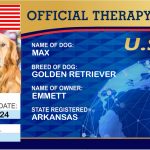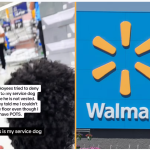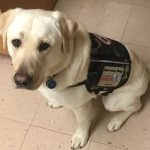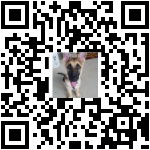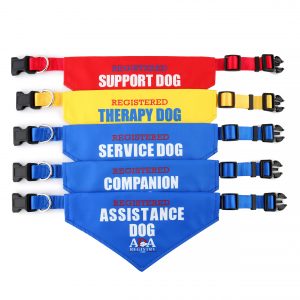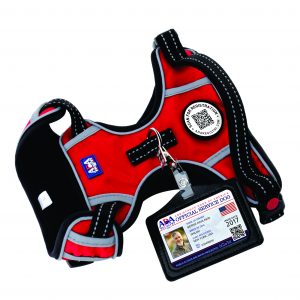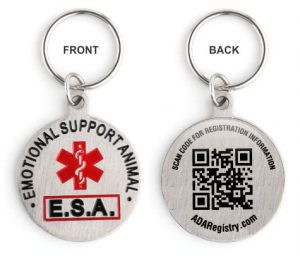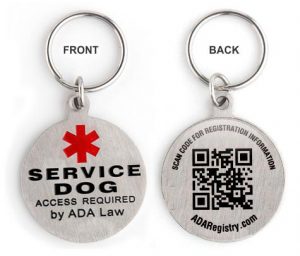Service pup in training
April 17, 2020
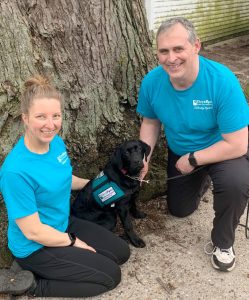
It’s not easy being a service-puppy-in-training during Shelter-in-Place. Puppy raisers Kurt and Kristy Handrich can only socialize 5-and-half-month- old Sammi with other dogs and trainers on Zoom. She can’t sniff other canine and practice her manners in restaurants.
“Puppies have certain periods they should be socialized in, and we are hoping she won’t miss it. On the other hand, she is getting intensive obedience training,” Kristy Handrich said.
Sammi, not unlike many of her human counterparts, is working to reach her potential during lockdown.
“She likes to please, especially for food,” Kristy Handrich said.
“She can go to 100 miles per hour, and then sit and calm real quick,” Kurt Handrich said.
Sammi is the 26th service dog raised by the Handriches for Occupaws Guide Dog Association. The accredited school through the International Guide Dog Federation, places fully trained dogs with the visually impaired.
It was a little unclear if “Sammi the Shark,” known for putting everything in her mouth and romping with her littermate, would be able to withstand the rigors of training. The Handriches’ last dog, Ohana, left to its next destination on March 13. It was an emotional time for Kurt, a U.S history and language arts teacher at Aldrich Intermediate School, and Kristy, a Gaston second grade teacher. Ohana had spent significant time in their classrooms, and last year they had lost their pet dog Waldo.
The Handriches had been waiting to get another puppy after a spring break trip, but after COVID-19 arrived Kristy Handrich longed to walk a dog.
“A week without a dog in the house is way too quiet,” Kurt Handrich added.
On March 22, 4-month-old Sammi arrived. While the Handriches have cats who are “social distancing,” they didn’t have another dog and Sammi adjusted well. She’s already learned to sit and stay, walk and follow basic commands. Although she was a licker, she quickly learned to “air lick” earning her latest nickname, “Sammi the Snake.”
Despite the lack of socialization during lockdown, the Handriches said she is well on her way to learning the 30 commands she will need to know under their watch.
The plan is for Sammi to be in Kurt Handrich’s classroom next fall. About a year from now she will head to harness training where she will go on to learn 150 total commands. If all goes well, in two years she will be helping someone who is visually impaired.
The Handriches have been puppy raising for 11 years through Occupaws.
Not only must they teach basic good behavior, but must instruct commands specifically used by the visually impaired. The “get dressed” command teaches the dog to walk into its harness for someone who may not see the dog. The dog has to learn to go to the bathroom with someone’s hand on its back so its future handler knows when and where to scoop up its “number two.” The dogs must be trained not to walk outside the house unless a command is given.
Having a dog who goes on to help someone who is visually impaired is a special experience. The dogs not only help those who have lost vision do basic tasks, but become great friends to their owners and help draw other people to them.
Often there is an emotional graduation ceremony where the Handriches can meet the new owner. Although it’s hard to say ‘goodbye,’ the Hanriches liken it to raising children and handing them off to a spouse in a wedding.
Not all dogs in training make the cut to be a service dog for the visually impaired. Some get “career change” as a search and rescue dog, emotional support dog or well-trained pet.
No matter what the dog’s final destination, having trained one is rewarding. The Handriches have had dogs in classrooms which has helped reduce stress for both kids and fellow staff. During non-COVID times, they get to take the pups in training to stores and restaurants with them.
“Even when you give them away and are sad, you get a new puppy right away. You never have to see them die. They are always puppies, and now they are out there helping others,” Kurt Handrich said.
Check Out Our Store


